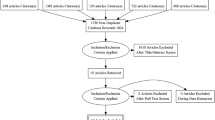Abstract
Purpose
To evaluate the radiopacity of contrast-loaded superabsorbent polymer microspheres (SAP-MS) under X-ray imaging.
Materials and methods
SAP-MS were suspended in contrast material (iodixanol) and the diameter change was assessed. The diameter of contrast-loaded SAP-MS in saline was measured sequentially. Radiography of the contrast-loaded SAP-MS was evaluated as radiopacity by contrast-to-noise ratio and visibility by multiple reader scoring. Under digital subtraction angiography, contrast-loaded SAP-MS were injected into a flow model. The flow speed was 1–10 cm/s, and images were acquired at 1–7.5 frames per second using a pulse width of 10–85 ms. Images were assessed by multiple reader scoring.
Results
The diameter of SAP-MS increased to 4.0–5.0 times its original size for approximately 15 min. The diameter of contrast-loaded SAP-MS in saline further increased by 10–30% within several minutes and returned to the previous size. Radiopacity and visibility of contrast-loaded SAP-MS decreased in 30 min after mixing with saline. Visibility was better with slow flow speed and narrow pulse width.
Conclusion
For effective observation, contrast-loaded SAP-MS should be kept in non-diluted contrast material until use. The conditions of slower flow and use of a narrow pulse width are recommended.






Similar content being viewed by others
References
Laurent A, Wassef M, Saint Maurice JP, Namur J, Pelage JP, Seron A, et al. Arterial distribution of calibrated tris-acryl gelatin and polyvinyl alcohol microspheres in a sheep kidney model. Invest Radiol. 2006;41:8–14.
Bonomo G, Pedicini V, Monfardini L, Della Vigna P, Poretti D, Orgera G, et al. Bland embolization in patients with unresectable hepatocellular carcinoma using precise, tightly size-calibrated, anti-inflammatory microparticles: first clinical experience and one-year follow-up. Cardiovasc Intervent Radiol. 2010;33:552–9.
Malagari K, Pomoni M, Moschouris H, Bouma E, Koskinas J, Stefaniotou A, et al. Chemoembolization with doxorubicin-eluting beads for unresectable hepatocellular carcinoma: five-year survival analysis. Cardiovasc Intervent Radiol. 2012;35:1119–28.
Brown KT. Fatal pulmonary complications after arterial embolization with 40–120-micro m tris-acryl gelatin microspheres. J Vasc Interv Radiol. 2004;15:197–200.
Gobin YP, Vinuela F, Vinters HV, Ji C, Chow K. Embolization with radiopaque microbeads of polyacrylonitrile hydrogel: evaluation in swine. Radiology. 2000;214:113–9.
Liu YS, Lin XZ, Tsai HM, Tsai HW, Chen GC, Chen SF, et al. Development of biodegradable radiopaque microsphere for arterial embolization—a pig study. World J Radiol. 2015;7:212–9.
Duran R, Sharma K, Dreher MR, Ashrafi K, Mirpour S, Lin M, et al. A novel inherently radiopaque bead for transarterial embolization to treat liver cancer—a pre-clinical study. Theranostics. 2016;6:28–39.
Sharma KV, Bascal Z, Kilpatrick H, Ashrafi K, Willis SL, Dreher MR, et al. Long-term biocompatibility, imaging appearance and tissue effects associated with delivery of a novel radiopaque embolization bead for image-guided therapy. Biomaterials. 2016;103:293–304.
Hori S, Okada A, Sakamoto K, Jiaqi Y, Minamitani K, Inaba F, et al. A new embolic material: super absorbent polymer microsphere and its embolic effects. Jpn J Intervent Radiol. 1996;11:375–81 (in Japanese).
Jiaqi Y, Hori S, Minamitani K, Hashimoto T, Yoshimura H, Nomura N, et al. A new embolic material: super absorbent polymer (SAP) microsphere and its embolic effects. Nihon Igaku Hoshasen Gakkai Zasshi. 1996;56:19–24 (in Japanese).
Gupta AK, Nelson RC, Johnson GA, Paulson EK, Delong DM, Yoshizumi TT. Optimization of eight-element multi-detector row helical CT technology for evaluation of the abdomen. Radiology. 2003;227:739–45.
Choe DH, Han MH, Kang GH, Yeon KM, Han MC. An experimental study of embolic effect according to infusion rate and concentration of suspension in transarterial particulate embolization. Invest Radiol. 1997;32:260–7.
Flory PJ. CHAPTER XIII. Phase equilibria in polymer systems. Principles of polymer chemistry. 1st ed. Ithaca: Cornell University Press; 1953. p. 584–9.
Tanimoto D, Ito K, Yamamoto A, Sone T, Kobatake M, Tamada T, et al. Observation of intravascular changes of superabsorbent polymer microsphere (SAP-MS) with monochromatic X-ray imaging. Cardiovasc Intervent Radiol. 2010;33:1016–21.
Guibelalde E, Vano E, Vaquero F, Gonzalez L. Influence of X-ray pulse parameters on the image quality for moving objects in digital cardiac imaging. Med Phys. 2004;31:2819–25.
Funding
This study was not supported by any funding.
Author information
Authors and Affiliations
Corresponding author
Ethics declarations
Conflict of interest
The authors declare that they have no conflict of interest.
Ethical statement
This article does not contain any studies with human participants or animals performed by any of the authors.
Additional information
Publisher's Note
Springer Nature remains neutral with regard to jurisdictional claims in published maps and institutional affiliations.
About this article
Cite this article
Narita, A., Yamamoto, T., Ikeda, S. et al. In vitro evaluation of radiopacity of contrast-loaded superabsorbent polymer microspheres (SAP-MS) with static imaging and flow model. Jpn J Radiol 37, 710–718 (2019). https://doi.org/10.1007/s11604-019-00863-x
Received:
Accepted:
Published:
Issue Date:
DOI: https://doi.org/10.1007/s11604-019-00863-x




